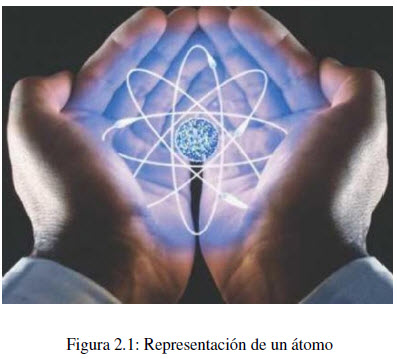
For 2000 years there has been speculation about the hypothesis that gives the atom the basic unit that constitutes all matter. For about 200 years, chemists have established different atomic models in which the atom is considered to be made up of protons, neutrons, and electrons. The models that have had the greatest impact consider that protons and neutrons form a high-mass nucleus around which electrons revolve.
In the last 30 years, powerful microscopes (tunneling microscope) capable of visualizing individual atoms have been developed, irrefutable proof of the validity of the atomic theory.
Man used and dominated chemical reactions in prehistory, an example is combustion (fire). Obtaining iron from its ores dates from the year 1300 BC. C. and many important chemicals, such as nitric acid (strong water), sulfuric acid (vitriol oil) and ammonium sulfate (Glauber's salt) have been used for hundreds of years.
However, the fundamental principles that govern these reactions and allow us to explain the physical and chemical properties of substances were not established until very recent times.
Antoine Lavoisier (1743-1794) is considered the father of modern chemistry by establishing the pillars of its development.
In 1774, Lavoisier heated a sample of tin with air in a closed container and verified that the mass before and after heating (reaction) were equal. In this reaction the mass of the tin and the air (before the reaction) coincide with the mass of the tin oxide and the remaining air.
Experiments of this type led Lavoisier to formulate the Law of Conservation of Mass: " In any chemical reaction the total mass of the substances formed is equal to the total mass of the reactants ."
Joseph Proust (1754-1826) observed that dissolving one hundred pounds of copper in sulfuric or nitric acid and precipitating with sodium or potassium carbonate produced 180 pounds of basic copper carbonate.
Observations of this type made it possible to establish the Law of constant composition, or law of definite proportions: "All samples of a compound have the same composition."



